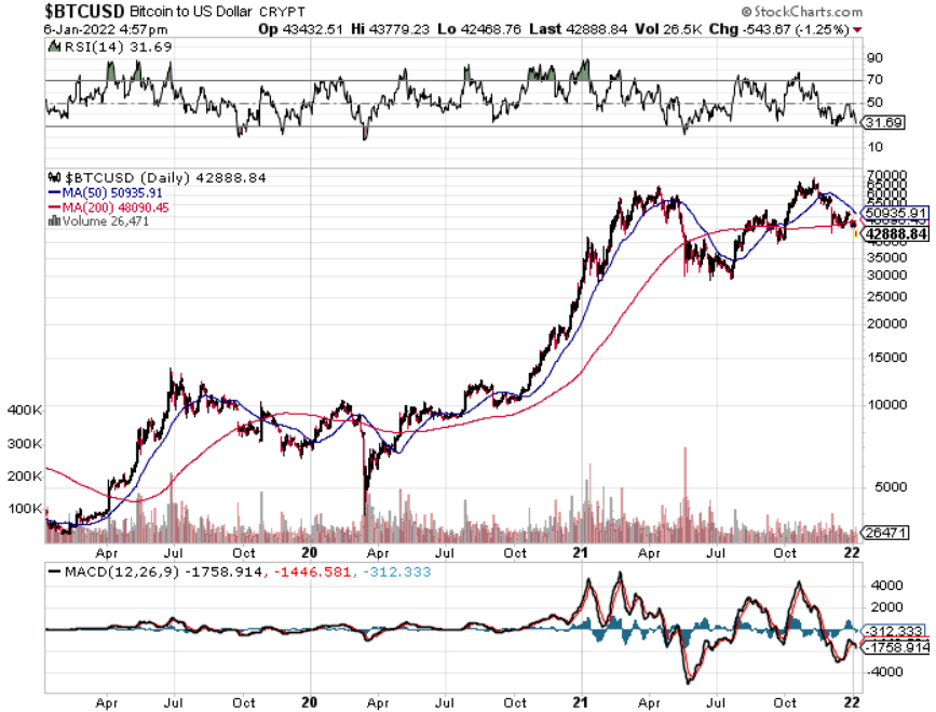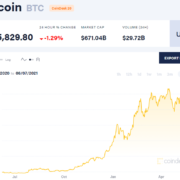The US Central Bank has confirmed our biggest fears — they plan to move faster than expected to head off hyperinflation that is crushing the cost of living in the United States.
Bitcoin has never been through this type of scenario before and the bad news for us is that Bitcoin is negatively correlated with the yield of US 10-year interest rate.
The price of crypto isn’t looking past the secular drivers of inflation, mass adoption, and store of wealth at this point because the Fed has usurped the narrative and is front and center.
The Fed is the driving force now of every asset class in the world from fiat currency to housing prices to tech stocks, yes, they are that influential.
I don’t want to sound like a broken record but until there is some sort of solution or handoff creating an easing in the accelerating interest rate expectation, Bitcoin and other cryptocurrencies are capped to the upside and exposed to the capriciousness of rate fluctuations.
The price movement tells the story of the digital gold dropping to the lowest level since its December flash crash as the first month of trading appears to have generated the conditions for unimpressive performance.
I say that because in the world of cryptocurrencies, conditions can turn on a dime, but in the short term, cryptocurrencies of all flavors will have a hard time re-accelerating.
If you had to choose one crypto to hang out in, I would choose Ethereum (ETH) because it will outperform relative to bitcoin in the long run.
This weakness won’t be the case forever. We simply need an event to greenlight the movement into crypto and that will happen sooner than later.
Bitcoin has surged by about 500% since the end of 2019 in the wake of stimulus measures put in place during the Covid-19 pandemic.
Tokens of popular DeFi applications including Uniswap and Aave are also down.
Certainly, this won’t be a buy-and-hold type of year where the price goes in one direction.
The knee-jerk reaction came out of nowhere and buyers of crypto must reload their bullets for when the time comes.
The weakness has really been in all subsectors such as bitcoin mining stocks which took a beating as analysts reconsider their outlooks after a record-breaking year.
Bitcoin had climbed to a record of almost $69,000 in early November after U.S. regulators allowed Bitcoin futures-based exchange-traded funds.
A secondary reason for today’s weakness is the geopolitical flare-ups in Kazakhstan.
The internet shutdown all over the country due to protests against inflationary pricing meaning mining computers are down.
Why does this matter?
Kazakhstan is the second-largest country for Bitcoin mining, with 18% of Bitcoin’s computing power, so the internet shutdown caused a 12% drop in Bitcoin’s hash rate within a few hours.
The hash rate is not directly correlated to the price of Bitcoin, but it gives an indication of the network’s security, a drop might scare investors in the short term.
Kazakh miners are still offline and it’s yet to see how the situation shakes out in the small Central Asian country.
The reason for these protests were inflationary prices which is a common theme all over the world and particularly higher energy prices will hurt the Kazakh bitcoin mining sector in the long run and could shift them to other jurisdictions.



